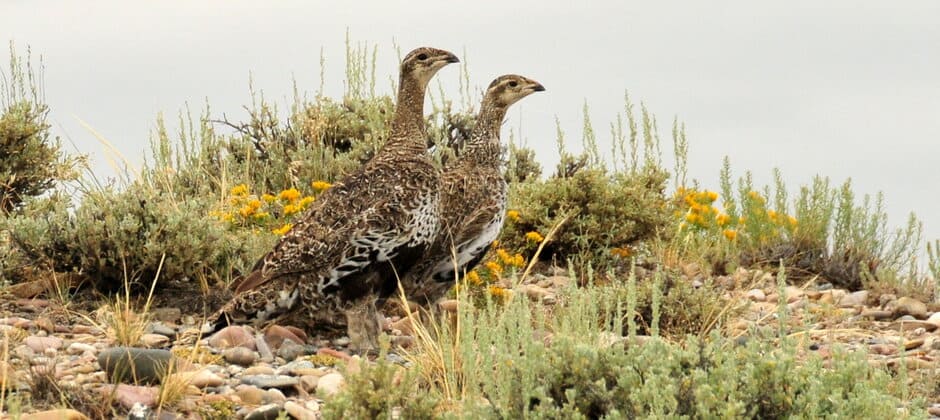Share this article
BLM reconsiders mineral extraction on 10 million acres
The U.S. Bureau of Land Management is reconsidering preventing new mining, drilling or other mineral extraction in areas identified as important for sage-grouse management.
The agency’s 2015 plan for management of the species identified “sagebrush focal areas,” which make up 10 million acres of federal land in six western stakes. The plan also included the proposal, prepared by the Obama administration, to withdraw these areas for new development.
In 2017, the Trump administration halted plans to withdraw the sagebrush focal areas. Then, in 2019, as part of broader changes to the management plans, it eliminated the areas altogether. But later that year, a federal district court judge blocked implementation of the BLM’s revised sage-grouse plans, due to the agency’s failure to comply with the National Environmental Policy Act. The court ordered the BLM to reinitiate the planning process.
Under the new proposal announced last week, federal lands critical for the survival of sage-grouse (Centrocercus urophasianus) in Idaho, Montana, Nevada, Oregon, Utah and Wyoming would no longer be available for new claims for mining, drilling or other mineral extraction.
The agency said it will soon develop a new environmental impact statement under the National Environmental Policy Act to analyze the decision to withdraw the land from new mining and drilling claims. Once a new statement is released, the agency will accept public comments.
The BLM also plans to work with partners, including the U.S. Geological Survey, the U.S. Fish and Wildlife Service, the U.S. Forest Service and others, to further review the broader 2015 sage-grouse management plans, which cover 70 million acres of federal land in 10 states, through a separate environmental impact statement process in the future.
That review will consider new data on sage-grouse populations, including recent studies from USGS. One of those studies found an 80% range-wide decline in sage-grouse since 1965, with a nearly 40% decline since 2002. Other studies have investigated the impact of free-roaming horses and climate change on sage-grouse.
In 2010, the U.S. Fish and Wildlife Service determined that greater sage-grouse warranted protections under the Endangered Species Act, but over the next several years, federal agencies, states and nonprofits worked together to developed protections to conserve the species without listing it under the ESA. As a result, Interior announced in 2015 that the sage-grouse would not require listing. That year, the BLM and U.S. Forest Service also finalized their sage-grouse conservation plans.
When the sage grouse management plans were revised in 2017, The Wildlife Society joined with partner organizations in writing to the Department of the Interior, providing recommendations for the plan revisions and expressing reservations about moving away from the collaboration and landscape-level planning that the 2015 sage-grouse conservation plans represent.
Read TWS’ statement on the 2015 decision not to list greater sage-grouse
Header Image: The Bureau of Land Management is reconsidering a 2015 plan to prevent new oil and gas drilling, along with other mineral extraction, on 10 million acres in the western United States. Credit: Tom Koerner/USFWS








